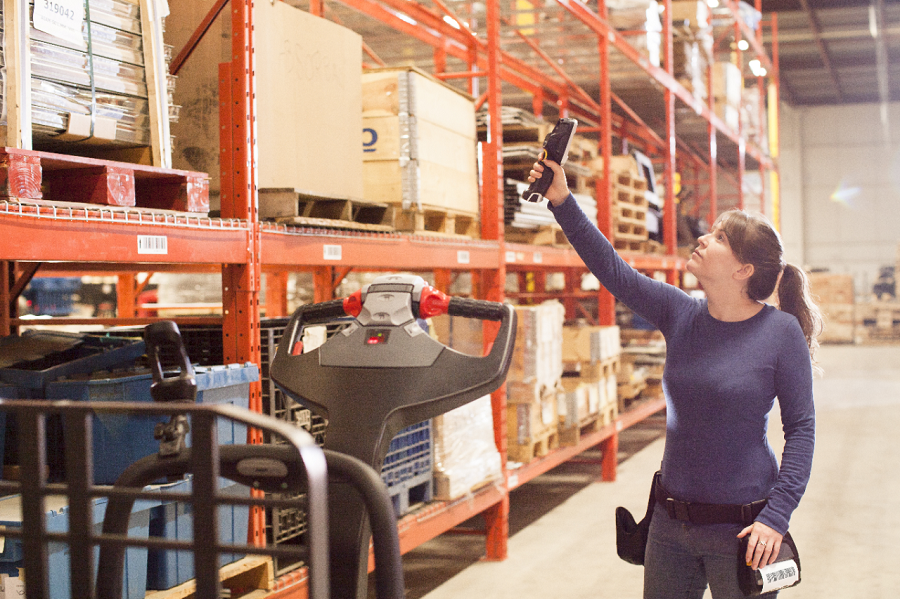Barcode equipment used in warehouses, factories, and in the field needs to be able to stand up harsh environments. Devices in these applications are frequently dropped, stepped on, exposed to chemicals, submerged in water, covered in dust, and in some cases even run into (or over) with heavy forklifts.
Just how rugged your barcode scanners, printers, and mobile computers need to be will depend on the specific application. One good measure of ruggedization is the Ingress Protection (IP) rating that the device meets. They are usually expressed as a two-digit number (i.e., IP42 or IP67). The higher the digit, the tougher the device.
Each number in the rating has a specific meaning. The first number indicates protection against solids (dust/dirt), while the second digit indicates protection against liquids.
First Digit (Solids)
0: No protection
1: Protection against solids up to 50 mm
2: Protection against solids up to 12 mm
3: Protection against solids up to 2.5 mm
4: Protection against solids up to 1 mm
5: Protection against dust; limited ingress
6: Totally protected against dust
Second Digit (liquids)
1: Protected against dripping water
2: Protected against dripping water (tilted)
3: Protected against water spray
4: Protected against splashing water
5: Protected against water jets
6: Protected against a nozzle under pressure
7: Protected against immersion (1 meter for 30 min)
8: Protected against submersion (at depth)
Knowing the IP rating can help you understand how a given device will perform in your facility. For example, IP67-rated devices are dust proof and can be submerged in liquids, making them ideal for demanding factory environments or use in the elements for field service applications. A lower IP rating might be acceptable in a dry warehouse where dust and dropping are bigger threats than liquids.
New devices have emerged that are IP68-rated, although manufacturers have to provide additional details about the depth and length of time the device can be immersed in liquid.
Ruggedized devices with higher IP ratings are less likely to fail in a warehouse environment or in the field than a consumer device. That level of durability means there will be fewer device failures as well as less downtime and lost productivity on the warehouse floor or in the field.
The same is true for barcode label printers. Zebra’s Xi4 Series and ZT200 and ZT400 Series printers are built to withstand the rigors of a harsh, dirty warehouse environment. The company also offers mobile printers that are just as durable. The ZQ500 Series of mobile printers features an IP54-rated design, while its QLn mobile printers are IP43 rated. The QLN is also available with a removable case that boosts its IP rating to 54.
While more durable devices have a higher sticker price, they have a lower total cost of ownership (TCO) because fewer devices will need to be replaced over time. Companies can avoid employee downtime and lost productivity by ensuring the devices are always functioning. A study by VDC Research found that using consumer devices could increase TCO by as much as 51% while reducing return on investment by 34%.
If you are in the market for new mobile computers, scanners, or barcode printers, make sure to check the IP rating and other ruggedization information (such as drop ratings, or ability to withstand shock or temperature extremes). This will make it easier to match the hardware to our operating environment and ensure that the cost of device failures doesn’t eat into your productivity or profitability.





